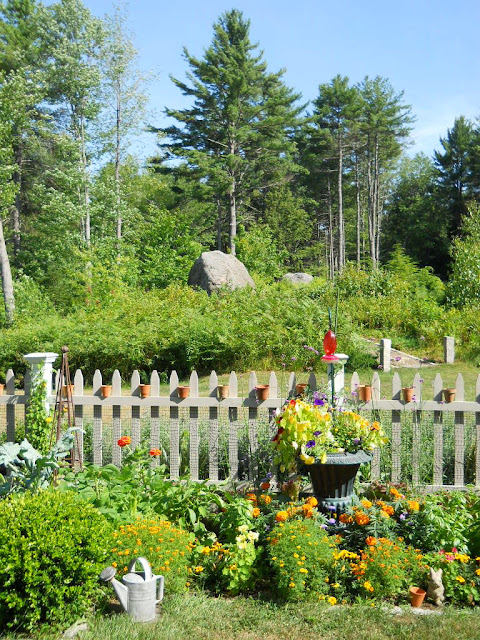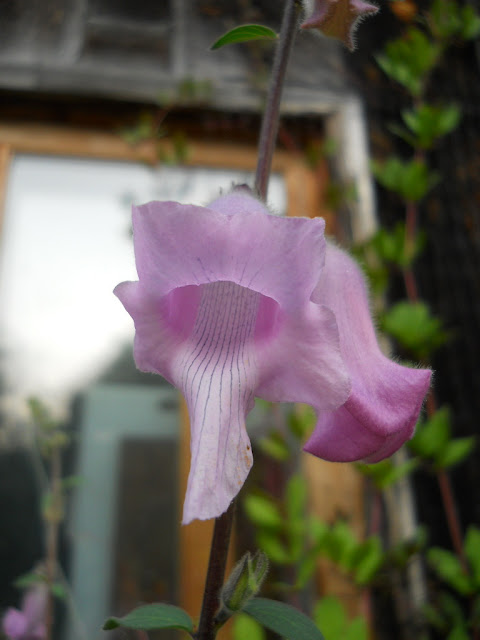The garden of Don and Lillian Stokes was the last stop of the day. This year it is not on the Open Days Garden Tour, but it was last year. It is a wonderful garden, beautifully designed and heavily focused on wildlife! Don and Lillian Stokes are the authors of the many Stokes Wildlife Field Guides including their most recent The Stokes Field Guide to Birds of North America. It is a beautiful book and loaded with incredible photographs, 500 of which were taken by Lillian. To see her photographs please see their terrific birding blog at http://stokesbirdingblog.blogspot.com.
Don and Lillian were so gracious to show me their garden and really talk about their ideas about design, designing for wildlife, and the evolution of their garden. The house is surrounded by 48 acres, with beautiful open fields heading down to a lake. It looks completely "natural," but Lillian and Don pointed out that much of the landscape was very intentionally sculpted, select trees were left while others were taken and trees were carefully limbed to control the views. They had wonderful rock outcrops, pathways, and sitting areas as well as beautiful perennial and shrub gardens closer to the house.
This beautiful, very large pot was made by the company Lunaform of Maine and this pot was based on a pot seen at Thuja Gardens on Mount Desert Island, Maine. I grew up on MDI and will post about Thuja in a few weeks when I go home to visit.
This border was originally a perennial border, but Lillian has been working to create a lower maintenance border by replacing maintenance heavy perennials with lower maintenance shrubs. The border is beautiful and dynamic!
One thing that struck me throughout the day in many of the gardens was the backdrop of the New England forest. It is common practice to plant yew hedges behind beautiful perennial gardens- the deep green, black color of the yew acts as a perfect backdrop and sets the flowers aglow. It is a remarkable effect! However, I have been noticing that at this time of year the New England forest can really do the same thing.
Artemisia 'Powis Castle'
Clematis jackmanii
There were a few playful sculptures in the garden made by Don's mother Charlotte Stokes.
The vegetable garden was full of everything edible, including all the flowers.
Talinum rugospermum























































